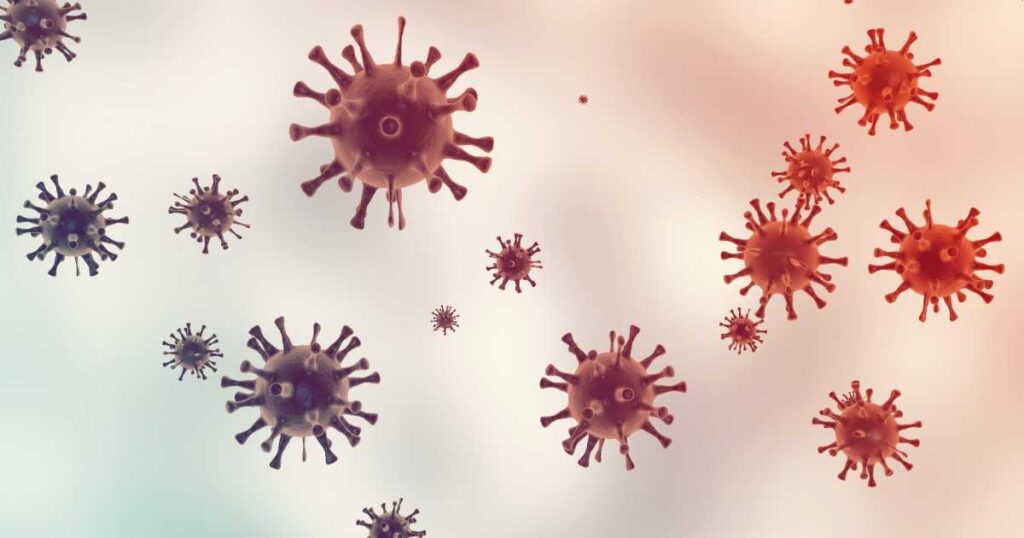Unhygienic waste practices, such as improper disposal of waste, lack of sanitation facilities, and poor waste management, pose significant threats to public health. In many parts of the world, these practices lead to the spread of infectious diseases, which often disproportionately affect vulnerable communities.
Tackling these issues is essential to preventing outbreaks and safeguarding the health of individuals and communities. This article delves into the causes of disease transmission linked to poor waste management practices and offers practical solutions to mitigate these health risks.
Causes of Disease Spread Due to Unhygienic Waste Practices:
Improper Waste Disposal: Improper disposal of waste, such as throwing garbage on streets or in water bodies, leads to the contamination of the environment. These waste materials can harbor harmful pathogens, including bacteria, viruses, and parasites, that can cause diseases like cholera, typhoid, and dysentery.
Open Defecation: In many underdeveloped regions, open defecation remains a widespread problem due to inadequate access to toilets and sanitation facilities. Fecal matter that is exposed to the environment can contaminate water sources, leading to waterborne diseases.
Stagnant Water: Stagnant water is a breeding ground for mosquitoes, which transmit diseases such as malaria, dengue fever, and Zika virus. When waste is not properly disposed of, it can create stagnant pools of water where mosquitoes thrive. Proper waste management practices, such as regular dumpster pickups, can help reduce the risk.
Littering and Plastic Waste: The accumulation of plastic waste can block drainage systems, leading to flooding during rains. This creates an ideal environment for the growth of disease-causing organisms, while the plastic itself often contains harmful chemicals that further endanger public health.
Contamination of Drinking Water: Waste, especially chemical and hazardous waste, when improperly disposed of, can seep into underground water sources or contaminate rivers and lakes. This leads to the spread of diseases through consumption of contaminated water, affecting millions globally.
Unregulated Landfills: In many parts of the world, landfills are not properly managed, and waste is left exposed. When waste breaks down, harmful pathogens can spread into the surrounding environment, posing a health risk to nearby communities.
Common Diseases Resulting from Unhygienic Waste Practices
Waterborne Diseases:
Cholera, Typhoid, and Dysentery are often transmitted through contaminated drinking water. Poor waste management allows fecal matter to enter water supplies, spreading these diseases.
Hepatitis A and E: These are viral diseases that are transmitted when individuals consume contaminated water or food.

Vector-Borne Diseases:
Malaria: Caused by a parasite spread by mosquitoes, malaria is prevalent in areas where waste and stagnant water are not properly managed.
Dengue and Zika: The Aedes mosquito, which transmits both diseases, breeds in stagnant water found in improperly discarded waste, such as plastic bottles and tires.
Soil-Borne Diseases:
Improperly disposed of waste, including human feces, can contaminate soil, leading to diseases like Hookworm and Roundworm. Children, in particular, are vulnerable to these infections.
Respiratory Diseases:
Burning waste, including plastic materials, releases toxic fumes into the air, contributing to respiratory illnesses such as asthma and chronic obstructive pulmonary disease (COPD).
Practical Solutions to Control the Spread of Diseases

Improved Waste Management Systems: Governments and local authorities must invest in proper waste collection and disposal infrastructure. This includes establishing well-maintained landfills, waste sorting systems, and recycling programs to prevent waste from accumulating in public spaces.
Public Awareness and Education: Community engagement is vital in preventing the spread of diseases caused by poor waste disposal. Public health campaigns that educate people about proper waste disposal methods and the importance of sanitation are key to changing behavior. Schools, media, and community groups can all play a role in spreading awareness.
Promotion of Sanitation Facilities: Improving access to sanitation facilities such as public toilets and sewage systems is essential. Governments must invest in infrastructure that allows individuals, especially in rural and underdeveloped areas, to practice hygienic waste disposal methods.
Support for Waste Segregation: Encouraging households and businesses to segregate waste into biodegradable, recyclable, and non-recyclable categories helps reduce the environmental impact. Organic waste can be composted, while recyclable materials can be reused, minimizing the potential for waste to become a breeding ground for disease.
Control of Stagnant Water: Draining stagnant water and cleaning drainage systems is essential to reduce mosquito breeding sites. Proper management of rainwater and ensuring that drains are clear of waste materials can significantly reduce the risk of vector-borne diseases like malaria and dengue.
Enforcement of Anti-Littering Laws: Strict enforcement of anti-littering regulations can prevent waste from being disposed of improperly in public spaces. Penalties for littering can help curb this harmful behavior and encourage cleaner environments.
Promotion of Recycling and Reuse: Reducing the reliance on single-use plastics is one of the most effective strategies for controlling waste accumulation. Encouraging communities to adopt reusable bags, bottles, and containers can significantly reduce waste and environmental contamination. Discover how dumpster rentals support recycling efforts.
Investing in Green Technologies: Governments and private sectors should invest in eco-friendly technologies for waste management, such as waste-to-energy plants and biodegradable materials, which can reduce the harmful effects of waste on both public health and the environment.
Collaboration with NGOs and International Bodies: Non-governmental organizations (NGOs) and international health organizations often provide valuable resources, expertise, and funding to address waste management and sanitation issues in underdeveloped regions. Collaborative efforts can bring more widespread, sustainable solutions.
Frequently Asked Question
What are the main health risks associated with unhygienic waste disposal?
Unhygienic waste disposal can lead to the spread of various diseases, including waterborne diseases (cholera, typhoid), vector-borne diseases (malaria, dengue), soil-borne infections (hookworm, roundworm), and respiratory illnesses caused by burning waste (asthma, COPD). Poor waste management often contaminates water sources, air, and soil, putting people at risk.
How does improper waste disposal lead to waterborne diseases?
When waste, especially human waste, is disposed of improperly and ends up in water sources, it contaminates drinking water. This contaminated water can carry pathogens such as bacteria, viruses, and parasites, leading to diseases like cholera, typhoid, and dysentery, which are transmitted when people consume the contaminated water.
What are the dangers of stagnant water caused by waste accumulation?
Stagnant water, often caused by waste blocking drainage systems, serves as a breeding ground for mosquitoes. These mosquitoes transmit diseases such as malaria, dengue, and Zika virus. Stagnant water also increases the risk of water contamination, which can contribute to the spread of waterborne diseases.
How can poor waste management impact soil health?
Improper disposal of waste, such as dumping human feces or organic waste on the ground, can contaminate soil with harmful pathogens. This can lead to soil-borne diseases, particularly affecting children who may play in contaminated areas. Diseases like hookworm and roundworm are commonly transmitted through contaminated soil.
How can waste segregation help in controlling disease spread?
Waste segregation involves sorting waste into biodegradable, recyclable, and non-recyclable categories. This helps minimize the waste that reaches landfills or pollutes the environment. Organic waste can be composted, and recyclables can be reused, minimizing contamination and reducing the potential for disease-causing pathogens to spread.
What is the role of sanitation facilities in controlling disease spread?
Proper sanitation facilities, such as toilets and sewage systems, are essential to prevent the spread of diseases caused by the contamination of water and soil. Inadequate sanitation often leads to open defecation, which directly contributes to the spread of waterborne diseases. Expanding access to sanitation facilities is critical in improving public health.
What are the best practices for controlling vector-borne diseases related to waste?
To control vector-borne diseases like malaria and dengue, it is important to eliminate mosquito breeding sites by draining stagnant water, cleaning blocked drains, and managing waste that can accumulate water, such as tires, bottles, and cans. Proper waste disposal and regular cleaning can prevent mosquito populations from growing.
How does burning waste contribute to respiratory diseases?
Burning waste, particularly plastic and other synthetic materials, releases toxic chemicals and pollutants into the air, which can lead to respiratory problems such as asthma, bronchitis, and chronic obstructive pulmonary disease (COPD). It is essential to manage waste properly and avoid burning it to reduce air pollution and health risks.
How can communities be educated to improve waste disposal practices?
Public awareness campaigns, community workshops, and school programs can play a significant role in educating people about the importance of proper waste disposal and hygiene practices. Local authorities, NGOs, and health organizations can collaborate to deliver targeted educational initiatives to inform communities about the dangers of improper waste management and the benefits of proper disposal methods.
Conclusion:
Unhygienic waste management practices are a key factor in the spread of preventable diseases globally. By enhancing waste management systems, educating communities, and promoting better sanitation practices, we can greatly reduce the health risks linked to improper waste disposal.
A comprehensive approach, combining public health campaigns, infrastructure improvements, and environmental responsibility, will be instrumental in protecting public health and fostering cleaner, healthier communities.
